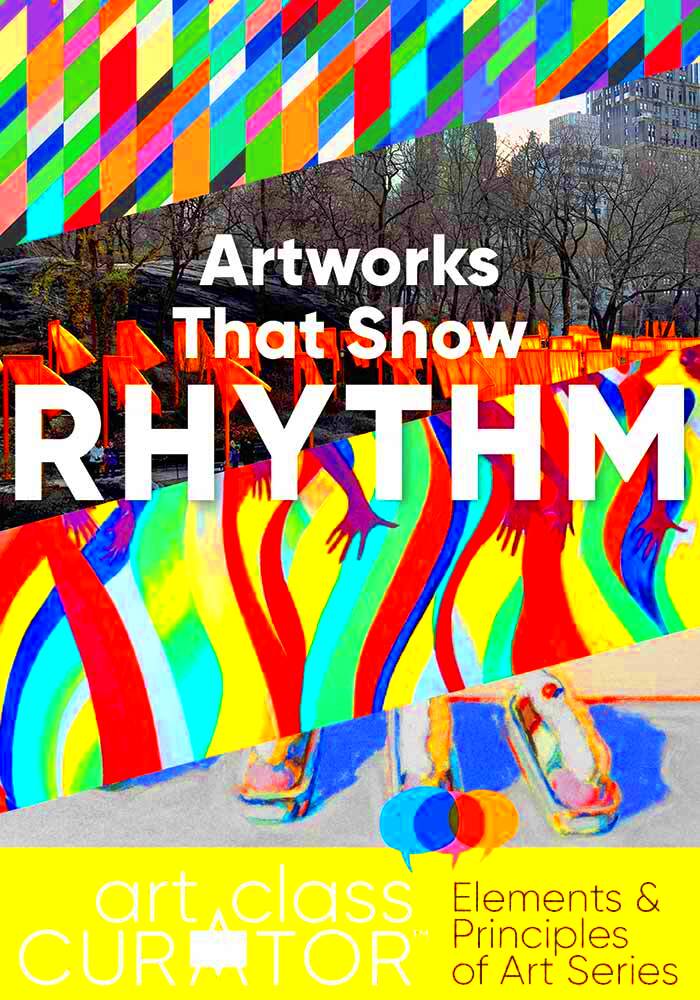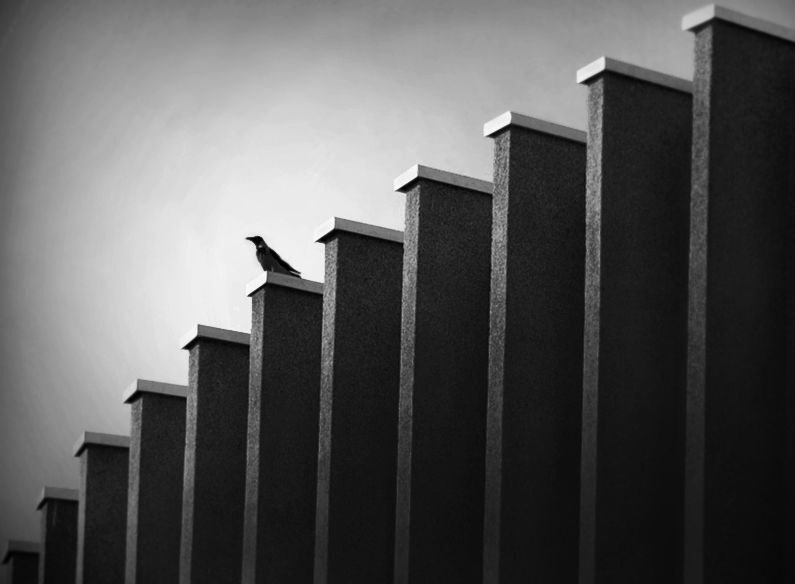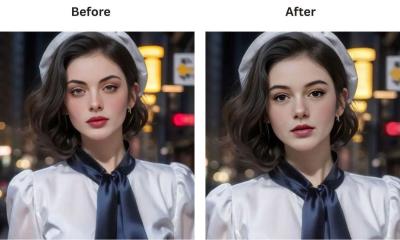Rhythm plays a crucial role in image creation, much like it does in music. It helps to guide the viewer's eye and creates a sense of harmony and movement. When images have a strong rhythm, they become more engaging and dynamic. This leads to a more enjoyable experience for the audience and can effectively convey the intended message or emotion.
Here are a few reasons why rhythm matters in image creation:
- Enhances Visual Flow: Rhythm creates a natural path for the eye to follow, making images easier to understand.
- Conveys Emotion: Different rhythms evoke various feelings, from calmness to excitement.
- Attracts Attention: Well-structured rhythms can draw viewers in and keep them focused on key elements.
Identifying the Elements of Rhythm in Images

To create powerful images, it’s essential to recognize the elements that contribute to rhythm. These elements work together to create a visual experience that resonates with the audience. Here are some key components:
- Repetition: Using similar shapes, colors, or patterns repeatedly helps establish a sense of rhythm.
- Variation: Introducing slight changes within the repetition can add interest and keep the viewer engaged.
- Line and Shape: Lines can guide the viewer’s eye, while shapes can create patterns that enhance rhythm.
By understanding these elements, you can start to incorporate rhythm into your images effectively.
Also Read This: Understanding Why Adobe Stock Images Have Watermarks
Choosing the Right Tools for Creating Rhythm

Selecting the appropriate tools can significantly influence the outcome of your image creation. Various software and applications offer features that help you establish rhythm. Here are some popular options:
| Tool | Features |
|---|---|
| Adobe Photoshop | Advanced editing tools for creating patterns and compositions. |
| Canva | User-friendly interface for designing images with templates and elements. |
| Procreate | Drawing app that offers brushes and layers to create rhythmic patterns. |
Each of these tools has its strengths, so choose one that aligns with your skill level and the type of images you want to create. Experimenting with different tools can lead to discovering unique rhythms in your work.
Also Read This: Explore an AI System That Can Create Realistic Images
Steps to Create a Powerful Image with Rhythm
Creating a powerful image with rhythm involves a series of thoughtful steps. Each step helps to build a cohesive and engaging visual experience. Let’s break down the process:
- Start with a Concept: Think about the message or emotion you want to convey. Having a clear idea will guide your design choices.
- Sketch Your Ideas: Use simple sketches to visualize how rhythm will play out in your image. This doesn’t have to be perfect; it’s about getting your thoughts down on paper.
- Select Your Elements: Choose shapes, lines, and colors that align with your concept. Consider how these elements will repeat and vary throughout your design.
- Experiment with Patterns: Play around with different arrangements. Try overlapping elements or creating sequences that draw the eye across the image.
- Refine Your Composition: Once you have a layout, refine the details. Adjust spacing, alignment, and balance to ensure a smooth flow.
- Get Feedback: Share your work with others to gather insights. Fresh eyes can help spot areas for improvement.
Following these steps can significantly enhance the rhythm and impact of your images.
Also Read This: How to Become an Exclusive Contributor on iStock
Incorporating Color and Texture to Enhance Rhythm
Color and texture are powerful tools for enhancing rhythm in your images. They can evoke feelings, create depth, and draw attention to specific areas. Here’s how you can effectively incorporate them:
- Choose a Color Palette: Select a palette that resonates with your concept. Stick to 2-4 colors to maintain harmony.
- Use Gradients: Gradients can create a sense of movement and flow. Consider using them to connect different elements in your image.
- Mix Textures: Combining different textures can add visual interest. Think about using smooth and rough textures together to create contrast.
- Establish a Rhythm with Color: Repeat colors strategically to create a rhythmic pattern. This can help lead the viewer’s eye through the image.
By thoughtfully incorporating color and texture, you can enhance the rhythm and overall impact of your designs.
Also Read This: Calculating Image Distance for Beginners
Utilizing Composition Techniques for Effective Rhythm
Composition is key when it comes to establishing rhythm in your images. It involves arranging elements in a way that creates balance and movement. Here are some techniques to consider:
- Rule of Thirds: Divide your canvas into a 3x3 grid and place focal points along these lines to create balance and flow.
- Leading Lines: Use lines within your image to guide the viewer’s eye toward the main subject. This adds dynamism to your composition.
- Balance Elements: Ensure that no part of the image feels too heavy. Distributing visual weight evenly creates a pleasing rhythm.
- Negative Space: Don’t be afraid to leave empty space. It can enhance the focus on your subject and create breathing room in your composition.
Experimenting with these techniques can help you find the right balance and rhythm in your images, making them more engaging for your audience.
Also Read This: How to Sell Photos on Getty Images Desktop
Examples of Images with Strong Rhythm
Looking at examples of images with strong rhythm can inspire your creativity and help you understand how to apply these principles in your work. These images often feature patterns, repetition, and movement that guide the viewer's eye smoothly across the frame. Here are a few examples that illustrate effective use of rhythm:
- Nature Photography: Pictures of flowing rivers or rolling hills often showcase natural rhythm through the repetition of shapes and lines, creating a sense of tranquility.
- Urban Landscapes: Cityscapes with repeating architectural elements, like rows of buildings or street lamps, create a rhythm that captures the vibrancy of urban life.
- Abstract Art: Many abstract works utilize color and shape repetition to create visual rhythm, drawing the viewer into a dynamic and engaging experience.
- Fashion Photography: Images that feature models in flowing garments can convey rhythm through movement, often enhanced by the use of wind or motion blur.
By studying these examples, you can gain insights into how to effectively implement rhythm in your images and explore new ways to engage your audience.
Also Read This: Adding a Transparent Image in Google Slides
Frequently Asked Questions
As you dive into creating images with rhythm, you might have a few questions. Here are some commonly asked questions that can provide clarity:
- What is rhythm in image creation? Rhythm in images refers to the visual flow that guides the viewer’s eye, often achieved through repetition and variation of elements.
- How can I find my rhythm when creating images? Experiment with different shapes, colors, and patterns. Sketch your ideas and play around with layouts until you find a composition that feels balanced.
- Can rhythm be used in all types of images? Absolutely! Rhythm can enhance any type of image, whether it’s photography, digital art, or graphic design.
- What tools can I use to create rhythmic images? Tools like Adobe Photoshop, Canva, and Procreate offer features that can help you explore and create rhythm in your images.
These FAQs can help clarify your understanding and guide you on your journey to creating impactful images.
Conclusion and Final Thoughts
Creating images with rhythm is a rewarding process that can elevate your work to new heights. By understanding the principles of rhythm, incorporating color and texture, and utilizing composition techniques, you can craft images that not only capture attention but also convey emotions effectively.
Remember that practice is key. Don’t hesitate to experiment with different styles and elements to discover what works best for you. As you explore the world of rhythmic image creation, you’ll find your unique voice and vision. So, get out there, start creating, and let the rhythm guide you!

 admin
admin








